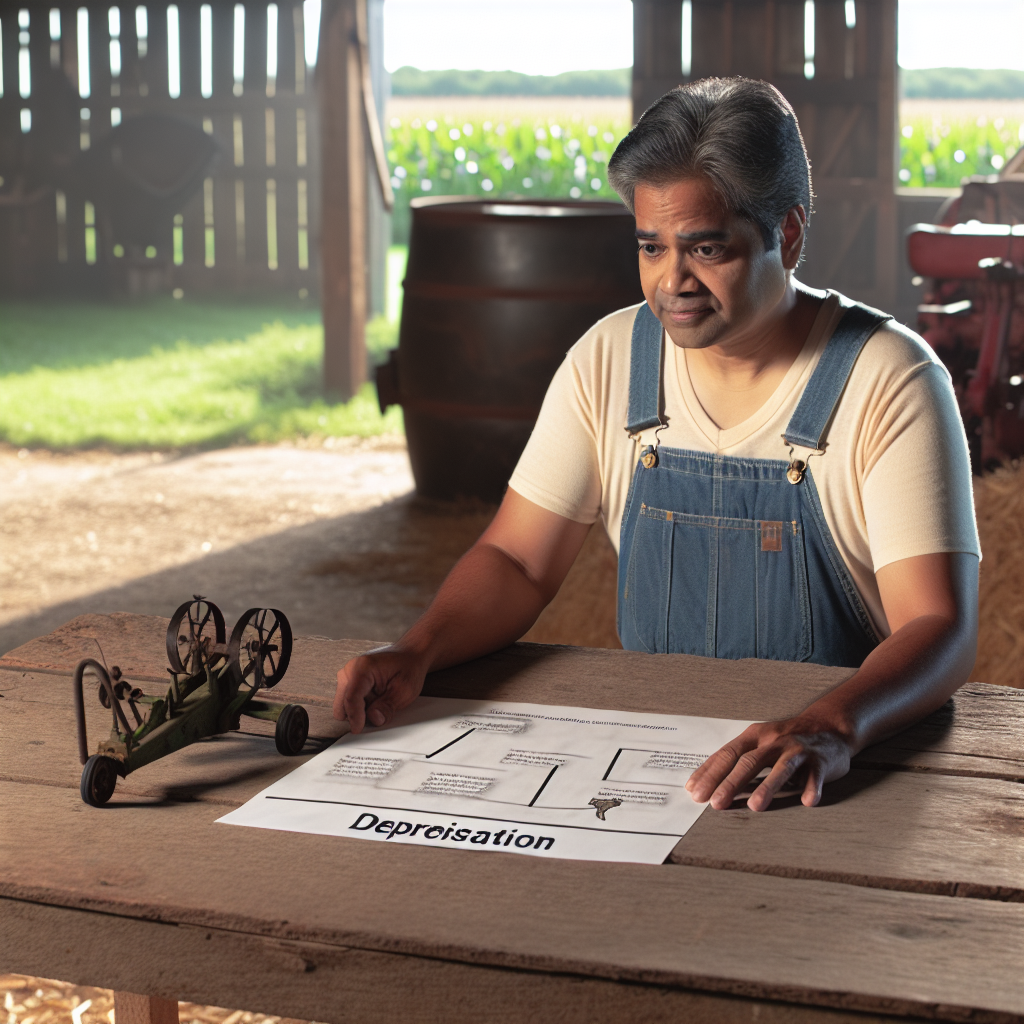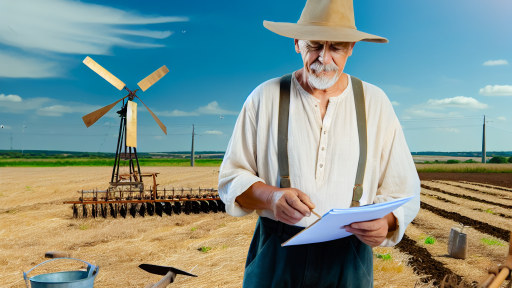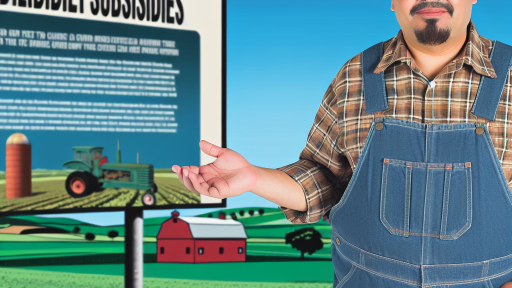Understanding Depreciation on Farm Equipment
Definition of Depreciation
Depreciation refers to the reduction in value of an asset over time.
This decline results from usage, wear and tear, and age factors.
Farm equipment, like tractors and combines, can significantly depreciate.
Understanding this concept is crucial for farmers aiming for accurate financial forecasting.
Importance of Depreciation in Agriculture
Accurate assessment of equipment value aids in budgeting for replacements.
Farmers can make informed decisions on when to buy new equipment.
Moreover, depreciation impacts tax liabilities positively when reported correctly.
This practice allows farmers to take advantage of potential tax deductions.
Factors Influencing Depreciation
Several factors determine how quickly farm equipment depreciates.
Firstly, the initial cost of the equipment plays a role.
Secondly, usage frequency directly impacts its wear and tear.
Finally, maintenance practices influence the lifespan and value retention.
Methods of Calculating Depreciation
Farmers can choose from multiple methods for calculating depreciation.
The straight-line method spreads the asset’s cost evenly over its useful life.
Alternatively, the declining balance method accounts for accelerated depreciation.
Transform Your Agribusiness
Unlock your farm's potential with expert advice tailored to your needs. Get actionable steps that drive real results.
Get StartedChoosing the right method depends on the specific financial situation of the farm.
Managing Equipment Depreciation
Smart financial management involves careful monitoring of equipment depreciation.
Tracking current values allows for better investment and tax planning.
Farmers should regularly review their equipment portfolios accordingly.
Understanding depreciation contributes to more resilient farm operations.
Types of Depreciation Methods Applicable to Farm Equipment
Depreciation reflects the reduction in value of farm equipment over time.
Farmers should understand how various methods impact taxable income.
Different methods serve distinct purposes and benefits.
Straight-Line Depreciation
Straight-line depreciation is the simplest and most commonly used method.
It allocates an equal amount of depreciation each year.
This method provides consistency in financial reports.
Farmers can easily calculate it by subtracting the salvage value from the cost.
Then, divide this amount by the useful life of the equipment.
Declining Balance Depreciation
Declining balance depreciation accelerates the depreciation expense.
It allows for higher deductions in the early years of ownership.
This method uses a percentage of the remaining book value each year.
Farmers can benefit from larger tax deductions upfront.
However, it is more complex to calculate than straight-line depreciation.
Units of Production Depreciation
Units of production depreciation varies based on equipment usage.
This method ties the expense directly to the output generated.
Farmers track the number of units the equipment processes each year.
Then, they calculate depreciation based on total production versus expected production.
This method can reflect true equipment value better than others.
Bonus Depreciation
Bonus depreciation allows for a significant first-year deduction.
Showcase Your Farming Business
Publish your professional farming services profile on our blog for a one-time fee of $200 and reach a dedicated audience of farmers and agribusiness owners.
Publish Your ProfileThis method applies to new and used equipment acquired after certain dates.
Farmers can write off a substantial portion of the cost immediately.
This strategy encourages investment in new farm equipment.
Moreover, it enhances cash flow within the operation.
Section 179 Deduction
The Section 179 deduction permits immediate deduction of certain expenses.
Farmers can deduct the full purchase price of qualifying equipment.
This incentive applies only to equipment purchased and used for business purposes.
It also has annual limits and qualifications that must be met.
This approach can significantly reduce taxable income for the year.
Factors Influencing Depreciation Rates for Farm Equipment
Introduction to Depreciation
Depreciation represents the reduction in value over time.
For farm equipment, it reflects wear and tear from usage.
Understanding depreciation helps farmers make informed decisions.
Initial Purchase Price
The purchase price significantly affects depreciation rates.
Higher-priced equipment generally depreciates more in absolute terms.
However, it may retain a higher percentage of its value.
Type of Equipment
Different types of farm equipment depreciate at various rates.
For instance, tractors might lose value faster than simple hand tools.
Additionally, specialized machinery can depreciate at unique rates.
Usage and Hours Operated
The extent of usage directly influences equipment depreciation.
More hours of operation typically lead to faster value loss.
Conversely, equipment that is rarely used may retain its value better.
Maintenance and Care
Proper maintenance can slow depreciation rates significantly.
Regular servicing ensures equipment remains in good working condition.
Well-maintained machines are often more valuable in resale situations.
Market Conditions
The overall market for farm equipment affects depreciation rates.
For example, economic downturns can worsen depreciation rates.
On the other hand, a flourishing agricultural market may stabilize prices.
Technological Advancements
New technologies can rapidly change equipment values.
As innovations emerge, older models depreciate faster.
Farmers must stay updated with industry advances to make good choices.
Age of the Equipment
The age of the equipment also plays a crucial role in depreciation.
A newer model typically commands a higher resale value.
Older equipment may require more repairs, reducing its market worth.
Supply and Demand Factors
Supply and demand affect the resale market for farm equipment.
An oversupply can drive down prices, increasing depreciation.
Conversely, high demand can enhance the value retention of equipment.
Gain More Insights: Maximizing Your Farm Subsidies Effectively
Impact of Depreciation on Farm Financial Statements
Understanding Depreciation
Depreciation refers to the reduction in value of farm equipment over time.
This decrease in value affects financial reporting significantly.
Farmers must recognize depreciation to present accurate financial statements.
Showcase Your Farming Business
Publish your professional farming services profile on our blog for a one-time fee of $200 and reach a dedicated audience of farmers and agribusiness owners.
Publish Your ProfileEffect on Profit and Loss Statement
The profit and loss statement reflects a farm’s operational performance.
Depreciation is recorded as an expense in this statement.
This expense reduces the net income reported by the farm.
Consequently, farmers must plan for lower profits due to depreciation.
Impact on Balance Sheet
The balance sheet provides a snapshot of a farm’s assets and liabilities.
Depreciation affects the asset values listed on this sheet.
As equipment depreciates, its book value decreases over time.
This reduction in value influences the overall net worth of the farm.
Tax Implications of Depreciation
Depreciation offers tax benefits for farmers.
Farmers can claim depreciation as a deduction on their taxes.
This deduction reduces taxable income, lowering tax liabilities.
As a result, managing depreciation effectively can lead to significant tax savings.
Strategic Decisions Based on Depreciation
Understanding depreciation helps farmers make informed decisions.
Decisions about purchasing new equipment hinge on depreciation insights.
Moreover, it’s essential for evaluating the timing of equipment replacement.
Farmers can improve financial planning by analyzing depreciation trends.
Gain More Insights: Understanding USDA Farm Subsidy Programs
Calculating Depreciation: Step-by-Step Guide for Farmers
Understanding Depreciation
Depreciation refers to the decrease in value of farm equipment over time.
This reduction in value impacts financial records and tax deductions.
Farmers need to understand how depreciation works for effective asset management.
Importance of Calculating Depreciation
Accurate depreciation calculations enhance financial planning.
They help in determining the actual profit from equipment use.
Additionally, knowing depreciation assists in making informed purchasing decisions.
Steps to Calculate Depreciation
Start with identifying the cost of the equipment.
Include all expenses related to acquiring the asset.
Next, estimate its useful life in years.
This estimation will guide your depreciation calculations.
Determine the salvage value of the equipment.
Salvage value represents its worth at the end of its useful life.
Depreciation Methods
Several methods exist for calculating depreciation.
Each method provides different tax benefits and financial implications.
The straight-line method is the simplest approach.
It divides the initial cost minus salvage value by the number of years of useful life.
Declining balance methods provide faster depreciation in earlier years.
These may be attractive for farmers needing quick tax deductions.
Example Calculation
Assume a tractor costs $30,000 with a salvage value of $5,000.
If the estimated useful life is 10 years, the annual depreciation is calculated.
Using the straight-line method, subtract the salvage value from the cost.
This gives a total depreciable amount of $25,000.
Dividing this by ten years results in $2,500 per year.
Showcase Your Farming Business
Publish your professional farming services profile on our blog for a one-time fee of $200 and reach a dedicated audience of farmers and agribusiness owners.
Publish Your ProfileRecording Depreciation in Financial Statements
Farmers should regularly update financial statements with depreciation figures.
This ensures accurate reflection of asset values and profits.
Understanding these entries can also simplify tax preparation.
Consulting Professionals
Many farmers benefit from professional accounting services.
Accounting professionals can help maximize tax benefits from depreciation.
Consulting with them also provides insights into your farm’s financial health.
See Related Content: Financial Aid Options for Sustainable Farming

Tax Implications of Depreciation for Farmers and Agricultural Businesses
Understanding Depreciation
Depreciation refers to the reduction in value of assets over time.
This concept plays a key role in financial planning for farmers.
Farmers often invest heavily in equipment to enhance productivity.
Knowing how depreciation affects taxes helps farmers optimize expenses.
Tax Deductions for Depreciation
Farmers can claim depreciation as a tax deduction.
This deduction reduces taxable income substantially.
Section 179 allows farmers to write off the entire cost of qualifying equipment.
This deduction is beneficial for new investments in machinery.
Different Methods of Depreciation
Farmers can choose between various depreciation methods.
The straight-line method spreads the cost evenly over years.
Alternatively, accelerated methods allow larger deductions early on.
Choosing the right method can significantly impact tax liability.
Record Keeping and Compliance
Accurate record-keeping is crucial for leveraging depreciation.
Farmers must maintain documentation for all asset purchases.
This includes purchase price, dates, and usage details.
Compliance with IRS regulations ensures proper tax treatment.
Consulting Professionals
It’s advisable for farmers to consult tax professionals.
Expert guidance can maximize potential tax benefits.
Farmers can gain insights into evolving tax laws and regulations.
Investing in professional advice may increase overall savings.
Uncover the Details: The Latest Agricultural Subsidies: What Farmers Need to Know
Strategies for Minimizing Depreciation Losses on Farm Equipment
Regular Maintenance
Regular maintenance can significantly extend the life of farm equipment.
Scheduled service checks keep machines running efficiently.
Additionally, addressing minor issues prevents costly repairs later.
Proper Storage
Storing equipment indoors protects it from weather damage.
Using tarps can offer additional protection against moisture.
Clean equipment before storage to prevent rust and corrosion.
Timely Upgrades
Upgrading to newer models can reduce depreciation risks.
Many farmers upgrade equipment to enhance efficiency and productivity.
Consider selling old equipment while it still holds value.
Insurance Coverage
Investing in comprehensive insurance can mitigate financial losses.
Insurance protects against theft, vandalism, and catastrophic events.
Review policies regularly to ensure adequate coverage amounts.
Showcase Your Farming Business
Publish your professional farming services profile on our blog for a one-time fee of $200 and reach a dedicated audience of farmers and agribusiness owners.
Publish Your ProfileProper Operation Techniques
Using the right techniques during operation helps prevent wear and tear.
Train all operators on correct usage to minimize damage.
Follow manufacturer guidelines for optimal performance.
Documentation of Repairs and Maintenance
Keep meticulous records of all repairs and maintenance tasks.
Documentation builds a history that increases resale value.
Investors look favorably upon well-maintained equipment.
Strategic Buying Decisions
Research different brands and models before making a purchase.
Choosing equipment known for durability helps reduce depreciation.
Buy used equipment in good condition to save on initial costs.
Real-Life Examples: Case Studies of Farm Equipment Depreciation
Agricultural Machinery Case Study
In 2021, Green Acres Farms purchased a new combine harvester.
This equipment cost $300,000 and had an estimated lifespan of 10 years.
According to straight-line depreciation methods, the farm deducted $30,000 annually.
After five years, the harvester’s book value dropped to $150,000.
However, its market value was only $120,000 due to technological advancements.
This case highlights that depreciation can differ significantly from market value.
Tractor Depreciation Example
Sunnyvale Ranch operates a fleet of tractors.
In 2018, they bought a specialized tractor for $120,000.
This equipment is expected to last eight years with consistent usage.
They used the double declining balance method for depreciation.
The first year, they deducted $30,000 from taxable income.
In the second year, the deduction was approximately $22,500.
This approach allows for larger deductions in the early years of service.
Impact of Maintenance on Depreciation
Farmers often overlook maintenance’s role in depreciation rates.
At Maple Leaf Farms, regular maintenance kept equipment values higher.
A tractor, originally valued at $100,000, retained a resale value of $80,000.
They implemented a preventive maintenance schedule every six months.
This strategy helped them achieve a lower depreciation rate.
Consequently, they received better offers on equipment trade-ins.
Technological Upgrades and Depreciation
Blackwood Estates frequently updates their farm equipment.
They recently replaced an outdated sprayer with a new model.
This investment was $250,000, but the previous model’s market value was only $50,000.
By upgrading, they could fully utilize the new technology’s benefits.
This strategy minimized their losses due to rapid depreciation.
In essence, timely upgrades impact financial planning and depreciation schedules.




